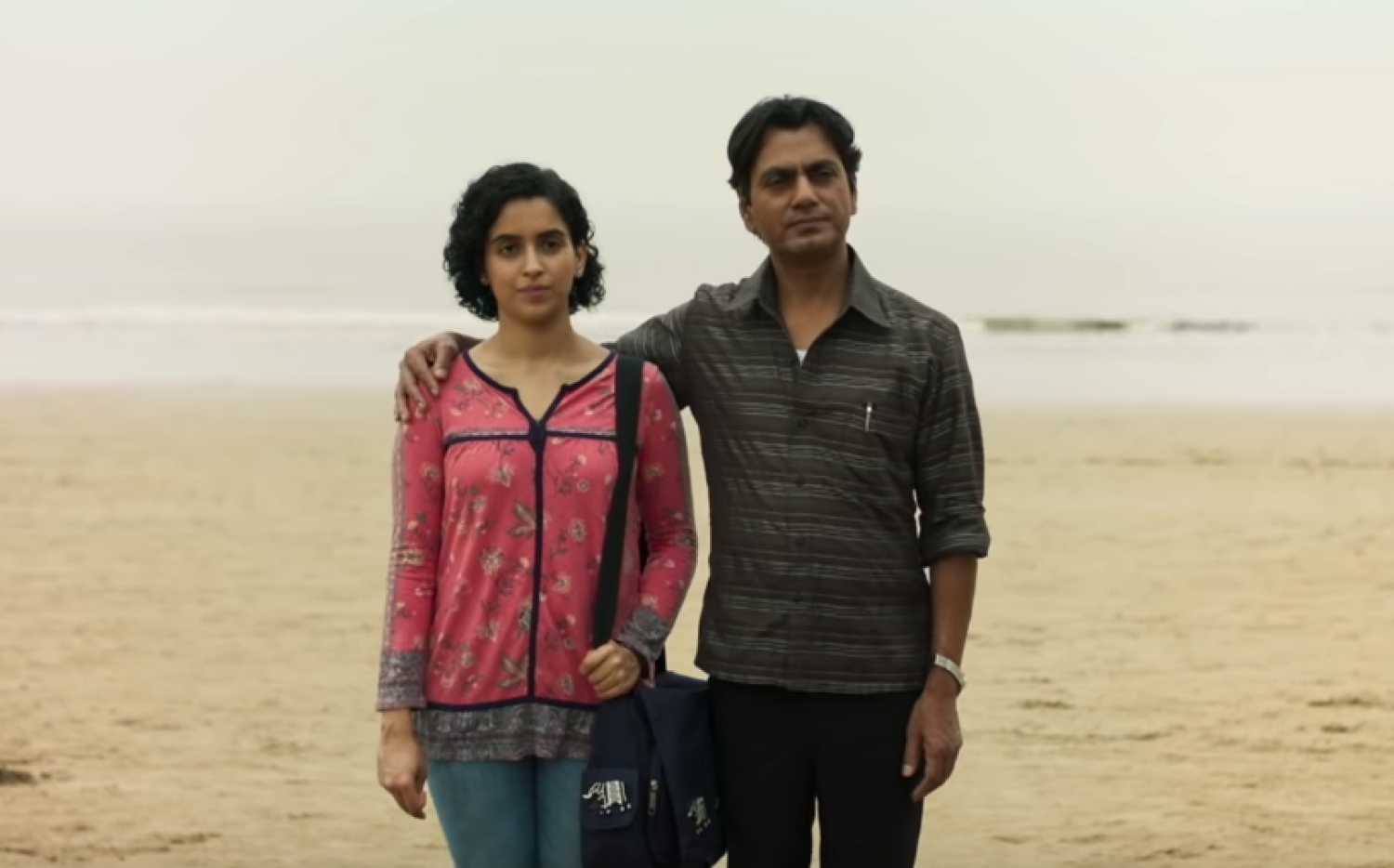The actor also revealed how he got into the skin of Shiv Sena supremo Bal Thackeray for his last film, Thackeray (2019).
Real photographers taught me how to convince customers in Photograph, shares Nawazuddin Siddiqui
Mumbai - 27 Feb 2019 9:00 IST


Keyur Seta
Nawazuddin Siddiqui recently played the character of Shiv Sena supremo Bal Thackeray. He left a mark with his portrayal of a powerful politician. In his next, Photograph, he is playing exactly the opposite.
In the film directed by Ritesh Batra, all his clout is taken away. The actor will be seen playing an ordinary photographer loitering around the Gateway of India in Mumbai. The film has Sanya Malhotra as the female lead.
The switch from Thackeray to Photograph shows the actor’s versatility as someone who can mould himself in any character.
During an interaction for the film, Siddiqui spoke about his preparation for the role, the advantages of attending international film festivals and whether he agreed with Thackeray’s beliefs and ideologies while playing him on screen.
You are playing a photographer who roams around the Gateway of India. How did you prepare for this role?
Ritesh had provided us with a lot of photographers who are found on the Gateway of India. They came and taught me how to click and take out the print and how to stand and walk. By afternoon their energy go down, but still they keep their work going. They also taught us how to convince customers. We also saw them while they were working.
How challenging was it to play an ordinary street photographer?
The biggest challenge was to get it as real and authentic as possible. Ritesh’s instruction was, ‘Don’t act.’ He said I should appear like any other common man. Like a man in a crowd. Actors are habitual of getting into an acting zone as soon as they hear ‘action.’ But we decided to avoid it. For that, Ritesh did a lot of retakes as well.
If I am playing a character, I study real-life people that I come across in my life. I think there is a lot of truthfulness and realism in it. We are used to looking at fake characters in our films since 60 years. I would never like to do that.

How challenging is that?
It is very challenging. It should look truthful and also like a character. For example, in Thackeray, I had to appear like Balasaheb and at the same time appear real as well. I ensured that it shouldn’t look like a larger-than-life character. It should look like a normal human being.
I watched a lot of his videos. I met Uddhav saheb, Aditya saheb and others who knew Thackeray saheb well. They told me his habits, way of talking, sitting and how he used to think. I focussed more on how Balashaeb was normally. Like how he used to have beer with chakhna [snacks].
How much did you agree with Thackeray’s beliefs and ideologies?

You can do justice to his role only if you trust his beliefs. As an actor, this is a huge opportunity for me. There are so many possibilities for you to show yourself as an actor in this character. Once in a lifetime you get a chance to play such a character. If any other actor in the world would have got the chance to play Balasaheb, he would have refused.
You have now acted in both Ritesh Batra movies — The Lunchbox (2013) and Photograph. How is it working with him?
The experience was very good. Ritesh is our country’s most popular director in the west, be it Europe of America. He has a lot of exposure of world cinema. He has been in the Sundance Film Lab for 4-5 years. Thousands of films go there every year. He used to watch them. Ritesh’s approach changes as per the film, in terms of how to extract performances from the actors. His process has been different in both films. I was stunned to see how he has grown. This is because of the world cinema exposure.

You have travelled at a lot of international film festivals. How much does it help change your outlook towards films?
I have been going abroad for festivals since 2012. Your way of looking at films definitely changes. There is a lot of truth in such films. The cinema you see over there can change your thought. The people over there don’t watch movies for just time-pass. For time-pass, they have other things. They have a special tradition and culture for cinema, just like we have for theatre. A lot of experimentation happens in Marathi theatre. This is seen in Marathi cinema too. The kind of films made there in last 4-5 years can never be made in Hindi.
You acted in a south film recently, in Petta. What difference did you experience over there as compared to Hindi cinema?
There is a lot of difference. There’s more professionalism over there. The people over there give a lot of respect even to the technicians, directors and other creative people. That doesn’t happen here.
What are your forthcoming films?
I have 2-3 films. All are love stories. Like Moti Choor Chakna Choor and Rome Rome Mein, which we shot in Rome.




